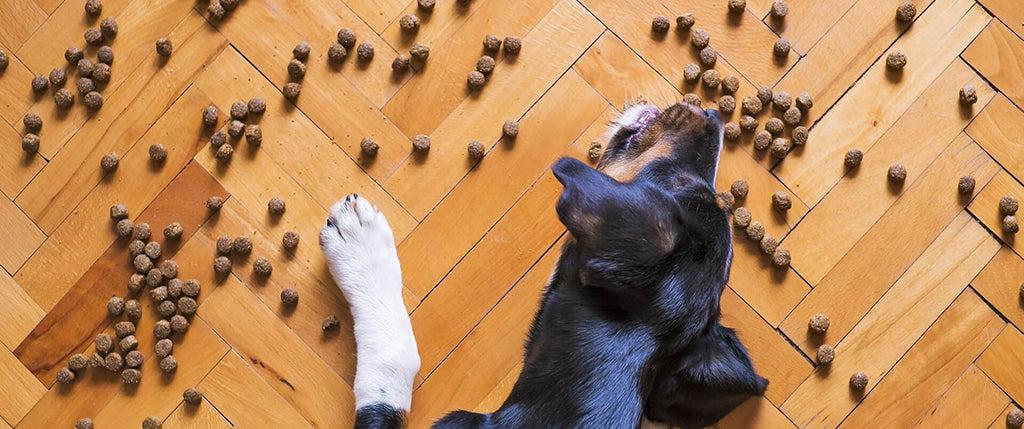Learning how to store dog food properly is all part and parcel of being a great pet parent. Learn how to store dog food and why it’s so important below.
Your Guide To Storing Dog Food

Dog food isn’t the nicest smelling food, so when it’s exposed to light and air, it can become rather rancid very quickly. It can also make your pup very sick!
If you’re spending money on quality, premium dog food, you don’t want it to go to waste, so the way you store it is very important.
First things first, check the best before date on the container or bag before you buy. Although the store you’re buying from should rotate their food correctly, sometimes some bags can slip through, so it’s always best to double-check.

Dry Food And Kibble
When it comes to knowing how to store dog food that’s dry, manufacturers have usually researched the best way to keep their dry food fresher for longer, so often leaving the food in its original packaging is a good way to store it! You should, however, make sure it’s tightly sealed after opening and store it in a cool, dry place.
Alternatively, you could put their dry food or favorite treats in an airtight container which will keep it just as fresh, and there are plenty of products designed exactly for this. Make sure it’s kept in a cool, dry place though! Dry dog food can go off pretty quickly if it gets too hot.
Canned Meat
If your dog eats canned meat and whilst the canned food is unopened, it’s normally okay for up to 5 years! When assessing how to store dog food, again, make sure you take a note of the best before date when you buy them. Canned food in plastic tubs won’t last as long as the tin cans.
PetLab Co. Pro Tip: When you stock up on canned food, make sure you’re putting those with the longest shelf life behind those with the shortest, so you don’t end up finding ones lurking on the back row that have already gone off!
If you don’t use a whole can after opening, store the unused food in an airtight container, cover the can in a food wrap, and refrigerate. You can then continue to use them within 5 days (however, this depends on the ingredients, so check over the packet’s instructions to make sure.)
Freeze-Dried/Dehydrated Foods
If you’re wondering how to store dog food and the food you’re referring to is freeze-dried, freeze-dried foods are quite often made using natural antioxidants which means they have a shorter shelf life than most foods. Once you’ve opened a packet, you should normally make sure they’re consumed within a few weeks!
It’s really important to make sure you keep freeze-dried food away from moisture to avoid bacteria and mold growth.
If you transfer this food or treat type to an airtight container it can actually extend its shelf life to up to 5 years!
Here at PetLab Co., we believe in freeze-dried supplements. The freeze-drying process allows you to lock in essential vitamins and minerals at the source. This also ensures a great taste in every bite of food or treat!

Raw Food
Raw food is definitely not made to be stored for a long time. Always use raw food 1-2 days after opening or thawing if from frozen.
If it’s frozen, it normally lasts for around 6 months in the freezer, but make sure it’s sealed and wrapped properly whilst in there.
Final Thoughts on Storing Dog Food
Because all dog foods have different expiry dates, ingredients, and preservatives, the shelf life will vary from brand to brand. Natural preservatives (like Vitamin C, Vitamin E, and Citric Acid) tend to break down quicker than artificial preservatives (such as Ethoxyquin, BHT, and BHA), which means natural foods are more likely to spoil quicker.
Always follow the manufacturer’s guidelines which are usually displayed clearly on the packaging, and follow this one rule: when in doubt, throw it out!
 S
S



